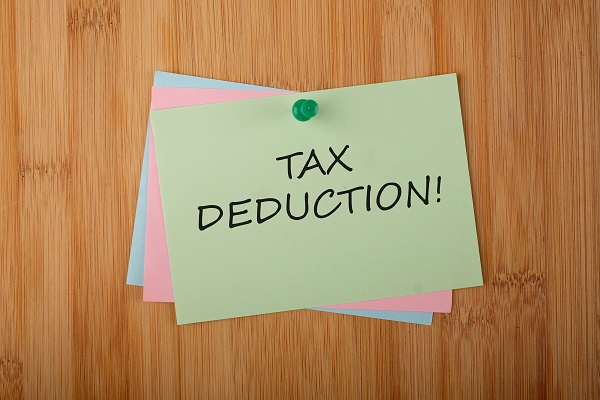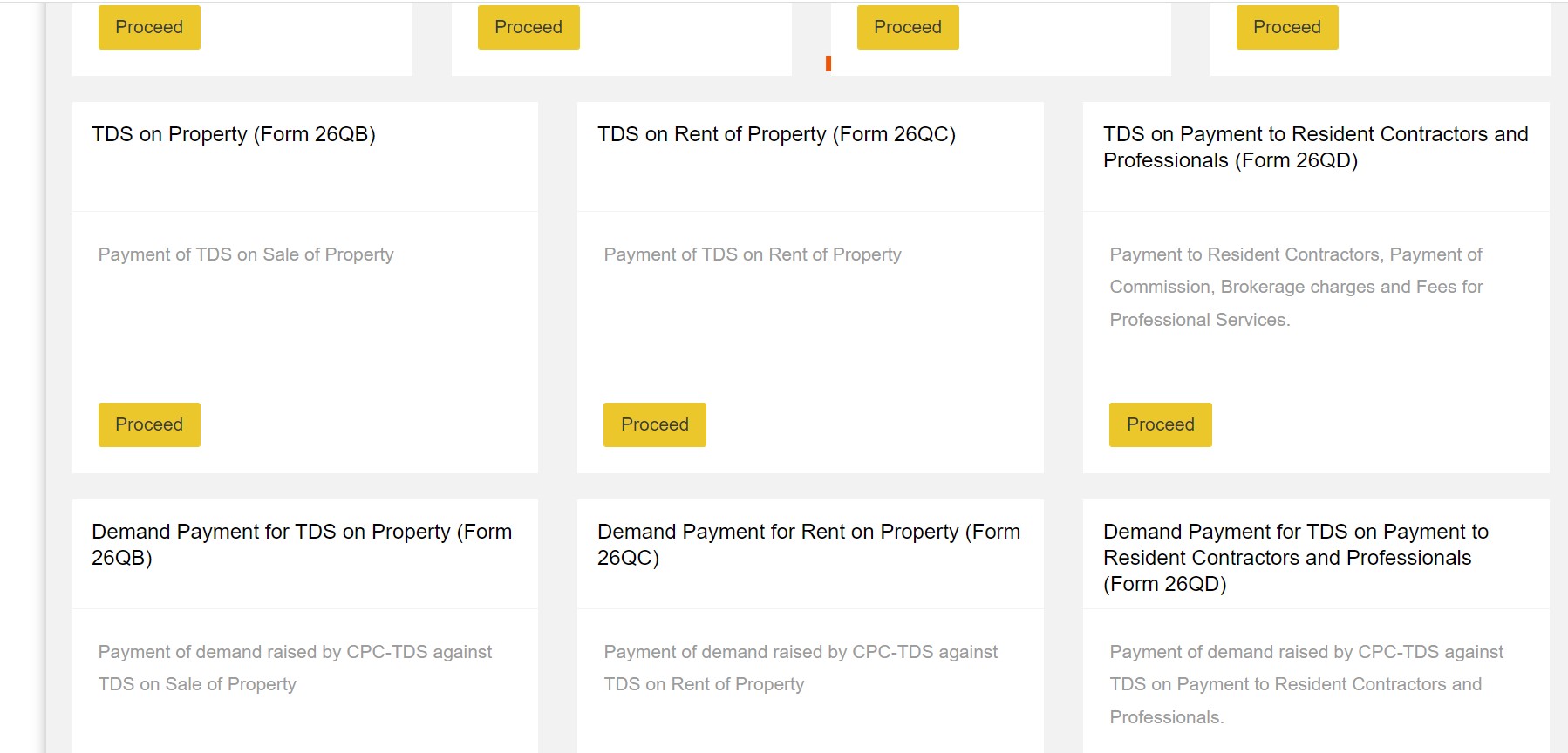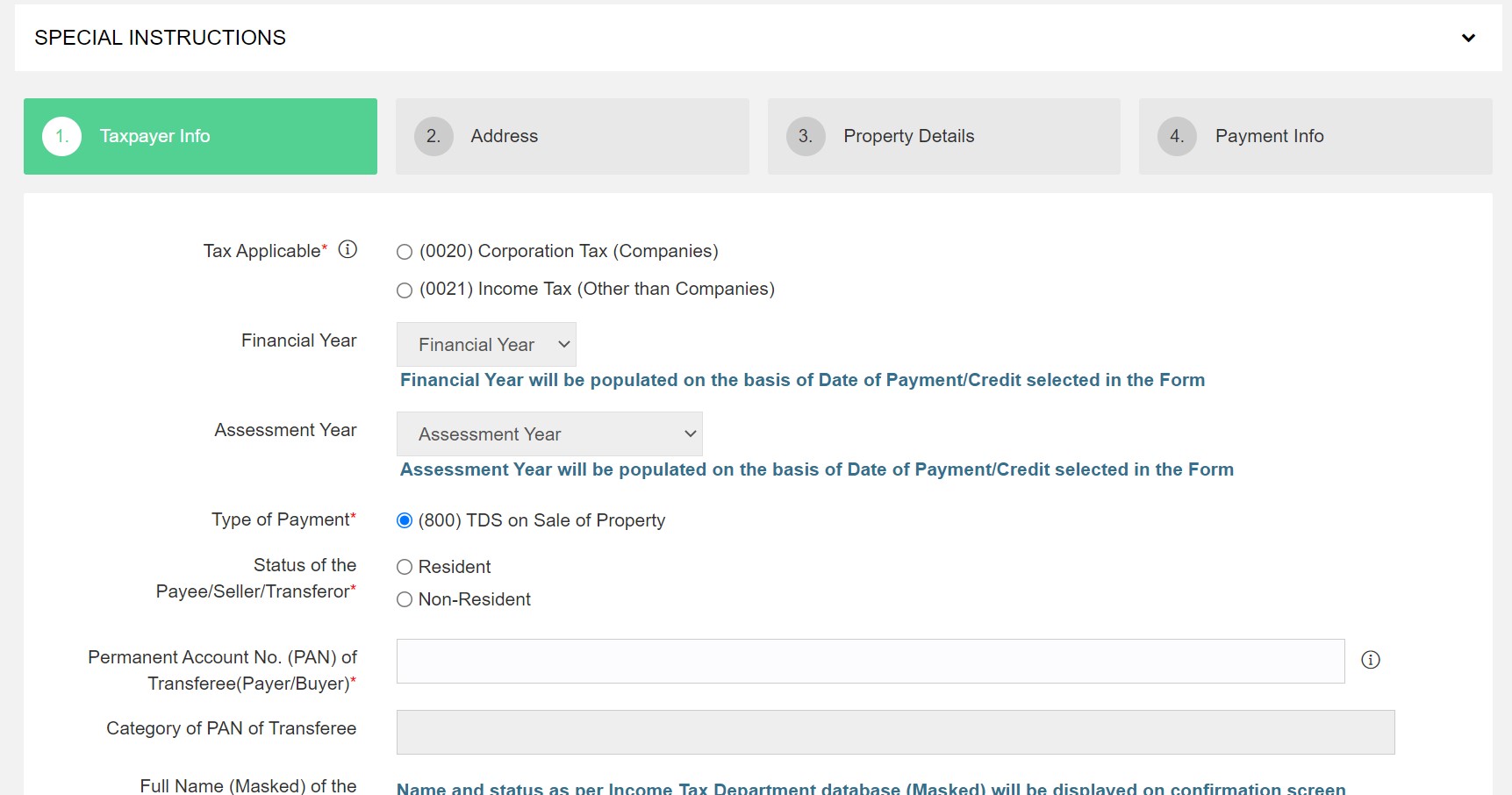TDS on Purchase of Property: Meaning, How to Pay Via Challan 26QB And Penalty for Non-Payment

A TDS or Tax Deducted at Source denotes the tax deducted by the payer on payment made to the recipient. While most buyers are informed about tax liabilities related to the sale of property, not many people know about the TDS on purchase of a property. TDS is applicable to payments connected with the purchase of an immovable property. Any individual purchasing a property from a transferor must deduct tax on any amount paid.
If you are planning to buy a property, learn about TDS on purchase of property, TDS on property purchase from an NRI, TDS rates, how to pay TDS, how to deposit TDS online and penalty for not filing Form 26QB. Read on!
What is TDS on Purchase of Property?
According to Section 194-IA of the Income Tax Act, the TDS on property purchases worth above 50 lakh is applicable at the rate of 1%. Such properties include residential property, land and commercial property. Buyers are required to deduct the TDS either when they are implementing the conveyance deed or when making payment of any required advance before executing the deed.
Furthermore, individuals are required to pay TDS on the purchase of immovable property to the Central Government within a span of 30 days from the last day of the month wherein tax is deducted. Here, agricultural land is an exception. The buyer must provide a TDS certificate to the seller 15 days prior to the due date of depositing the tax-sheet.
Note that the rate of TDS on property purchases from an NRI is not similar. If an NRI sells a property, the buyer is eligible to deduct TDS at 20% when purchasing a property from an NRI. However, if the property was sold 2 years from the purchase date, TDS on property purchase could increase to 30%.
This is because tax deduction in terms of long-term capital gains is 20%, and short-term gains are taxable based on the applicable income tax slab rates for NRIs in India.
When an individual files forms for TDS on purchase of property, individuals are required to fill out Form no. 26QB. If there is more than one seller or buyer, one needs to fill out Form 26QB with all required details.
How to Pay TDS via Challan 26QB?
Here is the step-wise guide on paying TDS on property purchase from an NRI via Challan 26QB and availing Form 16:
- Visit the Official Tin-NSDL Website
Click on Tin-NSDL and choose ‘services’ from tab and choose ‘e-payment’ taxes. A new box with multiple challans will be displayed on the screen

- Select TDS on property (Form 26QB)
Click on ‘Proceed’ ‘under the section TDS on property (Form 26QB)’. A new screen will appear.

- Fill in the Details
If you belong to a corporate payer list, select ‘Code 0020’. However, in case you belong to the non-corporate payer list, choose ‘0021’. Other crucial details such as AY, FY, and payment type will be automatically filled.

- Add Buyer’s and Seller’s Details
Enter appropriate details in the respective fields such as buyer’s and seller’s PAN details, address of transferee and transferor, non-resident/resident, property’s full address, deposited tax amount, the paid amount in words and figures, etc.
- Make the Payment
Choose the mode of payment; it is possible to make e-tax payments by visiting the branch. After selecting net banking, you can log in to your online banking profile and complete the payment successfully. Finally, take a print-out of the payment receipt for future reference
After this, you need to register on TRACES you are using this portal for the first time. You can complete this registration by using PAN and registered Challan number. After this registration, you will receive an authorised Form 16B (TDS certificate). Individuals can issue it to the seller.
How to Obtain Form 16B?
To obtain Form 16B, individuals need to follow this step-wise procedure mentioned below:
Step 1: After successful payment, click on Form 16B.
Step 2: To complete this process successfully, enter the seller’s PAN information and acknowledgement details related to the property. Next, click on ‘Proceed’.
Step 3: Verify all details and select ‘Submit a request.’
Step 4: The processing of your request will take a few hours. Click on ‘Downloads’ from the available drop-down menu.
Step 5: Status of Form-16B download request will appear as ‘Available’.
Step 6: If status shows ‘submitted’, wait for some more hours and repeat the previous step.
Step 7: You need to download the zip file, and you will find Form 16B inside it.
TDS on Instalment Payment
According to Section 194-IA, TDS on a land purchase or any other immovable property purchase is deducted during payment. Therefore, the transfer date is not important as TDS does not take place during the time of transfer but at the time of payment. Therefore, irrespective of the transfer date, TDS needs to be deducted at the time of payment. So, if one makes a payment in advance, a TDS deduction will take place.
Moreover, in case payment for property purchase is made in instalments to the seller, the TDS will be deducted during the time of paying each instalment.
This TDS deduction is required when an instalment is paid to the developer and not when EMI is paid to a financial institution. If the financial institution has paid the builder, this payment is made to the developer on the buyer’s behalf.
Also Read: A Step-By-Step Guide To Make TDS Payment Online
TDS if there’s More than One Buyer and/or Seller
In some situations, there’s a chance that more than one buyer is involved in a property. In such cases, if the individual price of property purchase of each buyer is below a certain limit of Rs. 50 lakh, but the entire value of a transaction is more than Rs.50 lakh here, Section 194IA of the Income Tax Act is applicable. In such a scenario, TDS on a property’s sale will be deducted and deposited to the government before the stipulated date.
On the other hand, there are chances of the involvement of more than one seller in the transaction process. In such cases, if the individual property sale price of each seller is less than Rs. 50 lakh, but the absolute value is more than Rs. 50 lakh, a TDS on property’s sale in case of joint sellers will be deducted by buyer while making payments.
Penalty for Not Filing Form 26QB
If an individual files a TDS return after the stipulated time, a penalty of Rs. 200/day will be imposed till the late filling continues. However, this penalty must not exceed the TDS amount for which the form has not been filed.
How to Deposit TDS on Property Purchase Online?
To pay TDS on the purchase of property, individuals need to obtain a tax deduction account number (TAN). However, if the property is immovable, you do not have to obtain TAN.
Here is the step-wise guide to pay TDS online:
Step 1: Visit the Tin-NSDL website.
Step 2: Select ‘TDS on sale of a property.’
Step 3: Next, select ‘online form for furnishing TDS on a property.’
Step 4: Choose the form stating ‘TDS on sale of a property.’
Step 5: Fill in necessary details of both buyer and seller, including property details, personal details, PAN, tax deposit, etc.
Step 6: Individuals need to confirm the submission and save this number for future reference.
Step 7: Make payment through net banking.
Also Read: How to File TDS Returns Online: A Step-By-Step Guide
Final Word
A comprehensive knowledge about TDS while planning to invest in a property can. Knowing about these deductions in detail will allow individuals to avoid paying additional fees or penalties.
FAQs on TDS on Purchase of Property
Ans: In recent times, virtual assets have gained massive popularity, and trading volume in relation to such digital assets has risen significantly. Therefore, effective from July 1 2022, as per Section 194S of the Income Tax Act, TDS deduction will take place on the amount paid for the transfer of digital assets to a resident at the rate of 1%.
Ans: Individuals can pay TDS for house purchases or property purchases online. Alternatively, if they want, they can choose to visit the financial institution and make the payment through their preferred payment mode.
Ans: After a buyer deducts TDS, one must pay it to the government by the 7th of the following month. For instance, if TDS deduction happens in March, the buyer must pay it to GOI by April 7.
Ans: Buyers who are unable to pay the TDS within the due date must pay the penalty in the form of interest, or they face imprisonment of up to 7 years.
Disclaimer
This article is solely for educational purposes. Navi doesn't take any responsibility for the information or claims made in the blog.
Read More on Income Tax Act

Customer’s Feedback
No comments found.What is Form 26QB for TDS? How to Download and Submit it?
While purchasing a property, buyers are liable to pay various taxes. The Finance Act, 2013 made TDS... Read More »PF Withdrawal Rules 2023 – Rules, Documents Required and Types
EPF/PF Withdrawal Employees’ Provident Fund (abbreviated as EPF) is a popular retirement sav... Read More »Stamp Duty and Property Registration Charges in Delhi 2023
It is compulsory for property buyers in the Capital to pay stamp duty in Delhi during property regi... Read More »Income Tax Return – Documents, Forms and How to File ITR Online AY 2023-24
In India, it is mandatory for all taxpayers who earn more than the basic tax exemption limit to fil... Read More »What is Section 80CCD – Deductions for National Pension Scheme and Atal Pension Yojana
The Income Tax Act provides a number of deductions and tax benefits to taxpayers, so they can strat... Read More »Tax on Dividend Income: Sources, Tax Rate and TDS on dividend income
What are Dividends? Companies may raise funds for running their operations by selling equity. Th... Read More »Section 112A of Income Tax Act: Taxation on Long-Term Capital Gains
What is Section 112A? Section 112A of the Income Tax Act was announced in Budget 2018 to replace... Read More »Section 206AB of Income Tax Act: Eligibility And TDS Rate
Section 206AB was introduced in the Finance Bill 2021 as a new provision pertaining to higher deduc... Read More »What is a Credit Note in GST – Example, Format and Steps
A GST Credit Note is mandatory for any GST-registered supplier of goods or services. As a supplier,... Read More »Exemptions and Deductions Under Section 10 of Income Tax Act
What Is Section 10 of the Income Tax Act? Section 10 of the Income Tax Act, 1961 provides tax-sa... Read More »Section 57 of the Income-tax Act – Income from Other Sources
It is quite likely that many entities - individuals as well as businesses - have multiple sources o... Read More »What is Dearness Allowance? – Types, Calculation, and Current Rate
What is Dearness Allowance? Dearness Allowance Meaning - Dearness Allowance (DA) is an allowance... Read More »Top 10 Chit Fund Schemes in India in 2023
Chit funds are one of the most popular return-generating saving schemes in India. It is a financial... Read More »10 Best Gold ETFs in India to Invest in April 2023
Gold ETFs or Gold Exchange Traded Funds are passively managed funds that track the price of physica... Read More »10 Best Demat Accounts in India for Beginners in 2023
Creation of Demat accounts revolutionised the way trades were conducted at the stock exchanges. It... Read More »20 Best Index Funds to Invest in India in April 2023
What is an Index Fund? An index fund is a type of mutual fund or exchange-traded fund (ETF) that... Read More »Best Arbitrage Mutual Funds to Invest in India in April 2023
Arbitrage funds are hybrid mutual fund schemes that aim to make low-risk profits by buying and sell... Read More »10 Best SIP Plans in India to Invest in April 2023
What is SIP? SIP or Systematic Investment Plan is a method of investing a fixed amount in ... Read More »10 Best Corporate Bond Funds in India to Invest in April 2023
Corporate bond funds are debt funds that invest at least 80% of the investment corpus in companies ... Read More »10 Best Bank for Savings Account in India [Highest Interest Rate 2023]
Savings account is a type of financial instrument offered by several banks. It lets you safely depo... Read More »






























